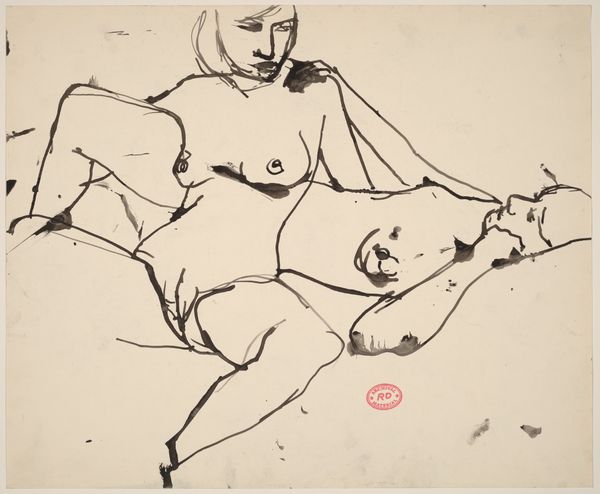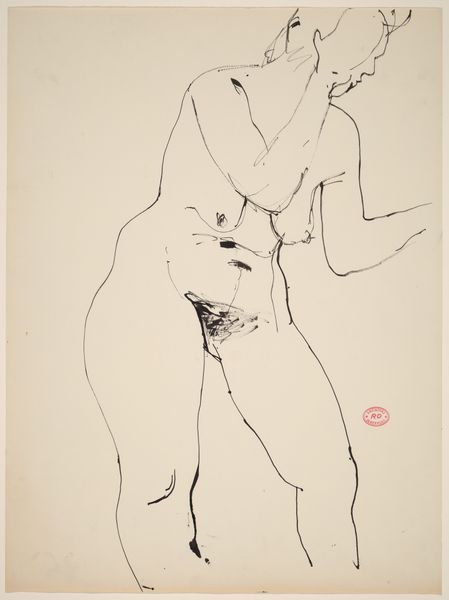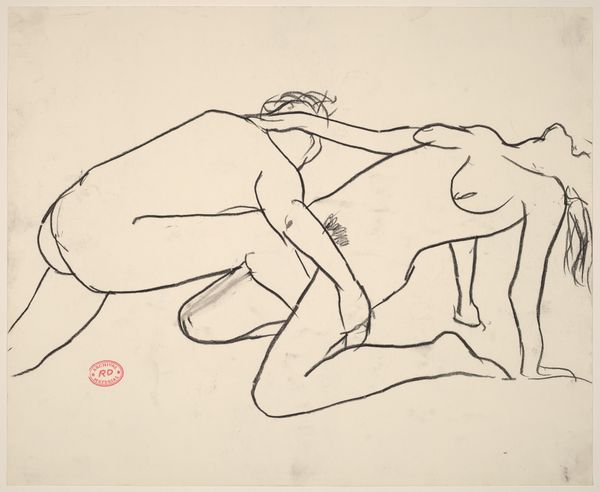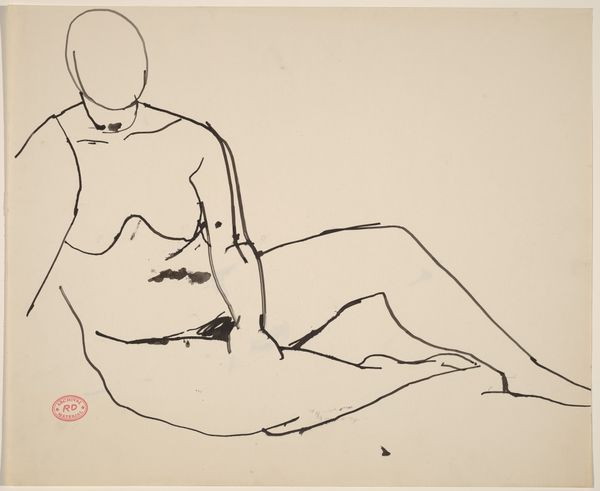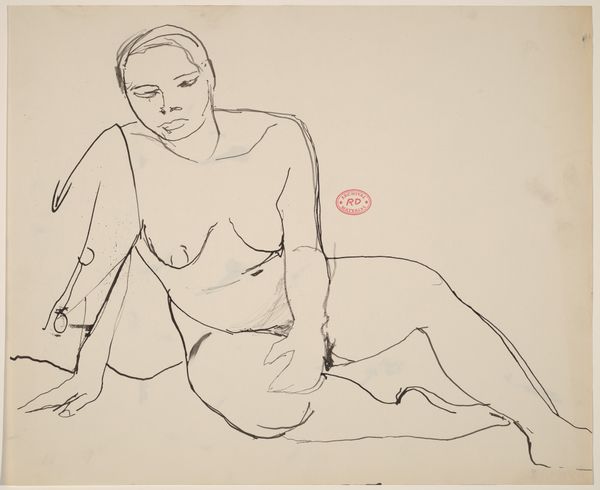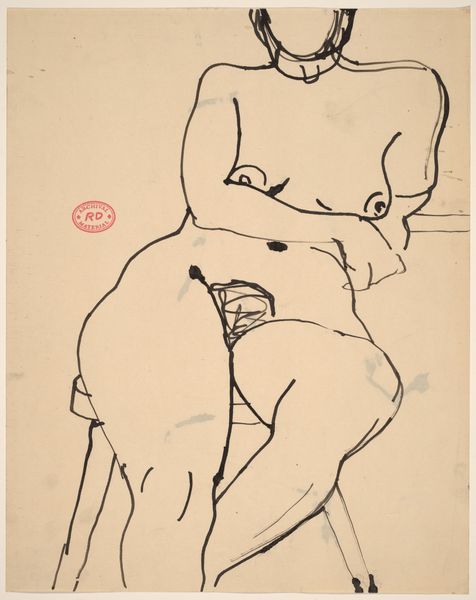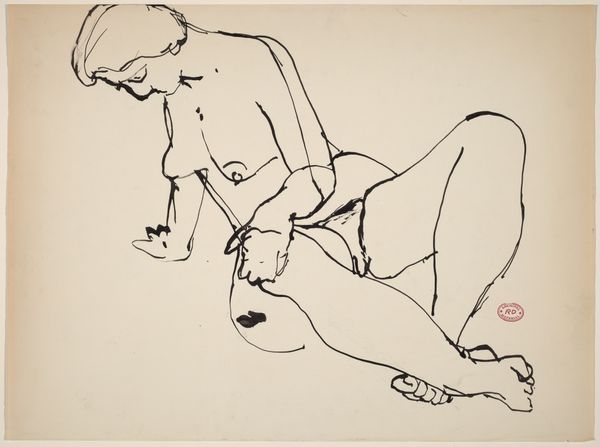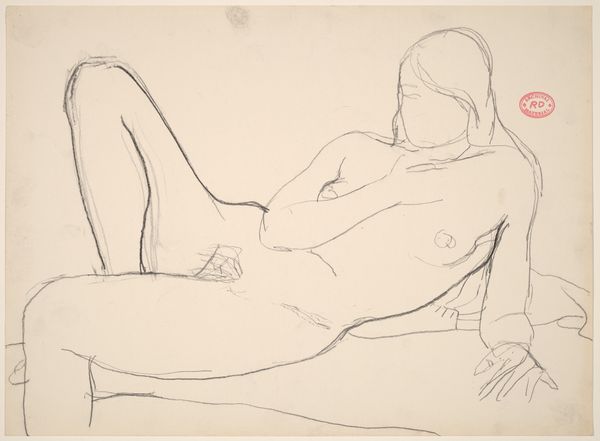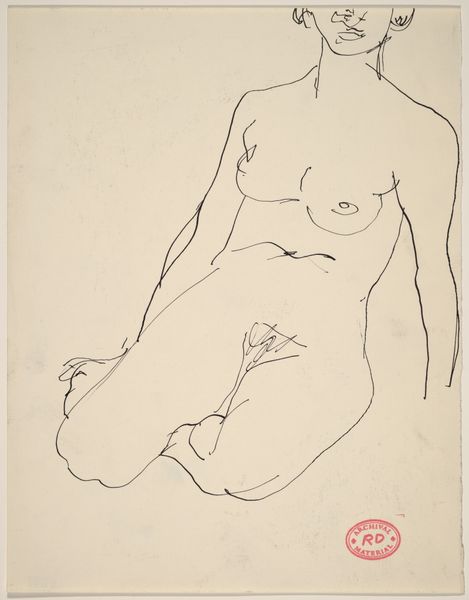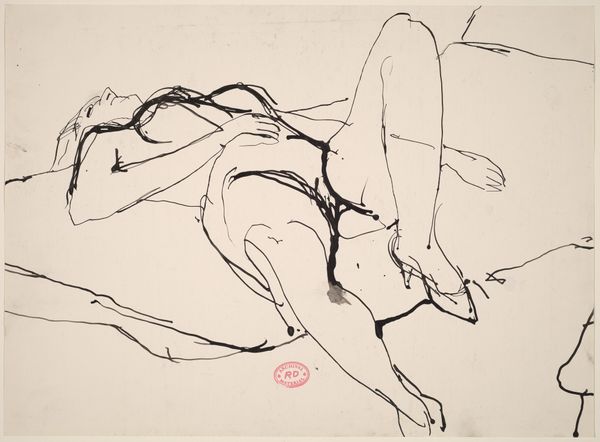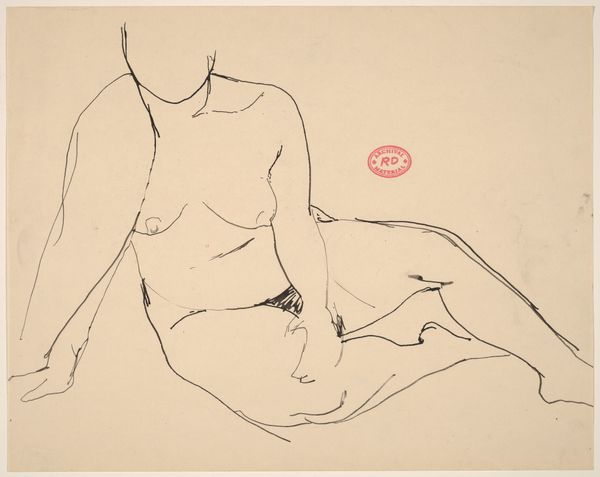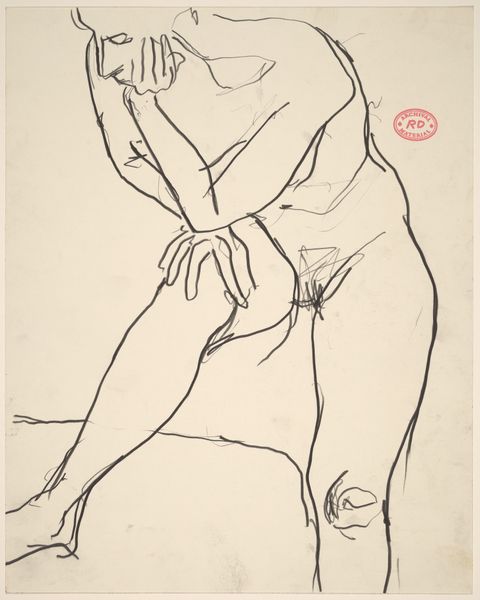![untitled [seated nude with her right shoulder draped] by Richard Diebenkorn](/_next/image?url=https%3A%2F%2Fd2w8kbdekdi1gv.cloudfront.net%2FeyJidWNrZXQiOiAiYXJ0ZXJhLWltYWdlcy1idWNrZXQiLCAia2V5IjogImFydHdvcmtzLzExMTUwZTk2LThmMzgtNDBjNS1iYWU2LTNmM2NiMDRiMTZiOS8xMTE1MGU5Ni04ZjM4LTQwYzUtYmFlNi0zZjNjYjA0YjE2YjlfZnVsbC5qcGciLCAiZWRpdHMiOiB7InJlc2l6ZSI6IHsid2lkdGgiOiAxOTIwLCAiaGVpZ2h0IjogMTkyMCwgImZpdCI6ICJpbnNpZGUifX19&w=3840&q=75)
untitled [seated nude with her right shoulder draped] 1955 - 1967
0:00
0:00
drawing, ink
#
drawing
#
ink drawing
#
figuration
#
bay-area-figurative-movement
#
ink
#
nude
Dimensions: overall: 35.6 x 43.2 cm (14 x 17 in.)
Copyright: National Gallery of Art: CC0 1.0
Curator: What a wonderfully stark drawing. Richard Diebenkorn, between 1955 and 1967, created this untitled piece—an ink drawing on paper depicting a seated nude. The bold, simple lines strike me immediately. Editor: It's incredibly immediate, isn't it? Raw, almost. The quick, decisive strokes, the patches of intense ink... it's evocative of a fragmented memory. A fleeting glimpse made permanent. There’s something primal about the form rendered so minimally. Curator: Well, nude studies like this were incredibly common during that period, both as academic exercises and expressions of the artist's freedom. There's a certain tension here, I think. Diebenkorn walks a line between classical figuration and a more abstract expression, echoing a dialogue many artists were having post-war. It rejects idealization in favor of direct experience. Editor: Precisely. I'm particularly drawn to how he eschews a defined face, creating a void where identity should be. Instead, we’re invited to project ourselves onto this figure, to see it less as a portrait and more as an archetypal representation of the female form—vulnerable, present. Look at the draped fabric; it's as much a part of the body as her limbs, representing modesty or perhaps a sense of protection? Curator: Perhaps. I wonder how much the context of the 1960s played a role here. A push for social freedom clashing with inherited artistic conventions. Diebenkorn presented her honestly, perhaps to embrace, question, or even reject conventional notions of how women are depicted in art. The lack of distinct facial features can also allow viewers from many backgrounds and viewpoints to see elements of themselves in this representation. Editor: It becomes a mirror in some ways. I find her positioning compelling too—that relaxed pose, grounded but not quite at ease. I almost want to say there is no gaze reflected to the viewers. Is she reflective, unaware or defiant of being observed? The draped cloth adds to this interpretation; what can't you see? Curator: Ultimately, this untitled drawing invites contemplation not just of the nude, but of the complex and evolving artistic landscape in which Diebenkorn found himself, a dialogue with history being rendered as an artistic object with a market and consumer in the present and the future. Editor: An image imbued with quiet intensity and a powerful timelessness, still capable of sparking questions. I’m really grateful for this shared insight.
Comments
No comments
Be the first to comment and join the conversation on the ultimate creative platform.
